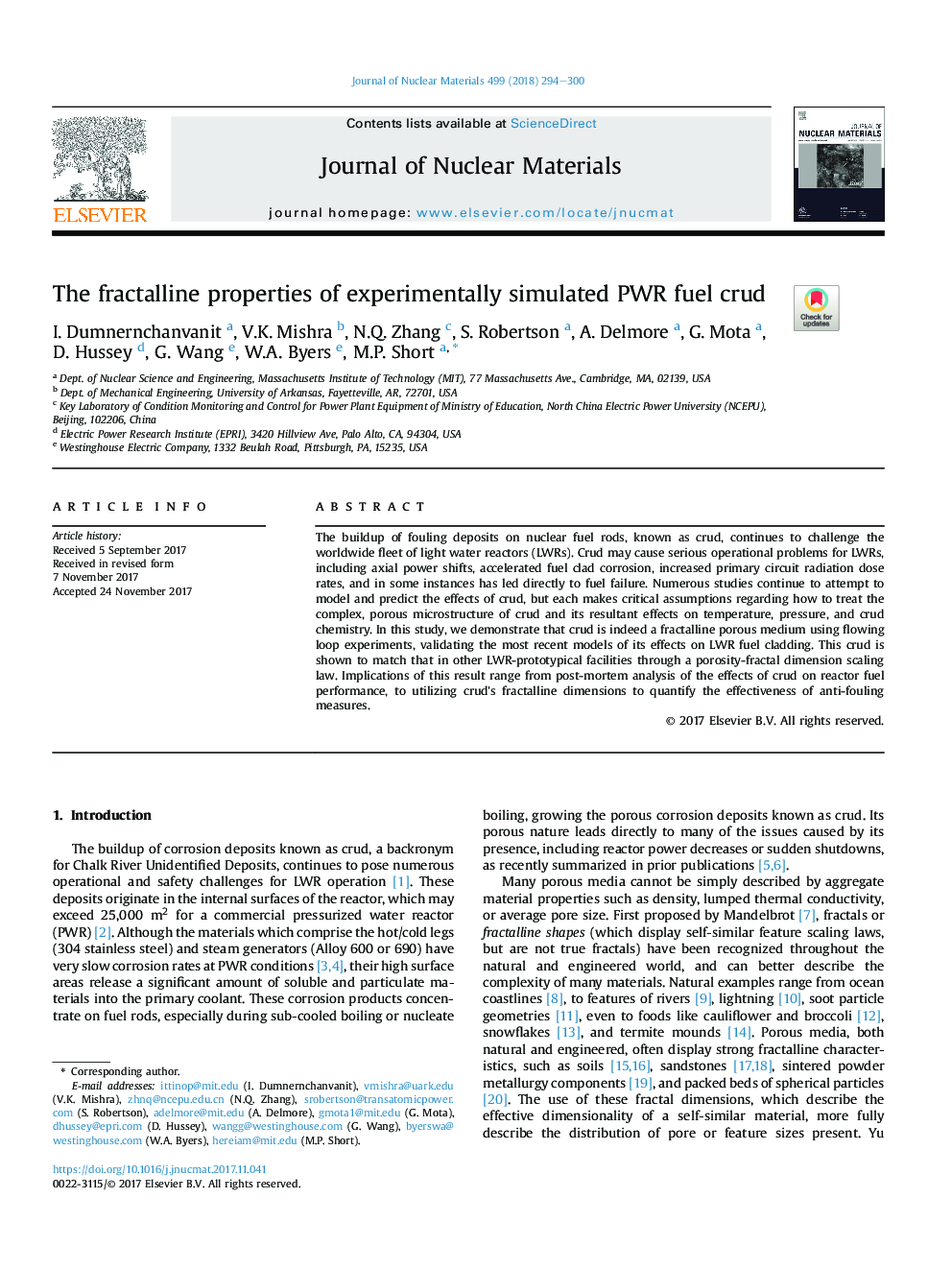| Article ID | Journal | Published Year | Pages | File Type |
|---|---|---|---|---|
| 7963538 | Journal of Nuclear Materials | 2018 | 7 Pages |
Abstract
The buildup of fouling deposits on nuclear fuel rods, known as crud, continues to challenge the worldwide fleet of light water reactors (LWRs). Crud may cause serious operational problems for LWRs, including axial power shifts, accelerated fuel clad corrosion, increased primary circuit radiation dose rates, and in some instances has led directly to fuel failure. Numerous studies continue to attempt to model and predict the effects of crud, but each makes critical assumptions regarding how to treat the complex, porous microstructure of crud and its resultant effects on temperature, pressure, and crud chemistry. In this study, we demonstrate that crud is indeed a fractalline porous medium using flowing loop experiments, validating the most recent models of its effects on LWR fuel cladding. This crud is shown to match that in other LWR-prototypical facilities through a porosity-fractal dimension scaling law. Implications of this result range from post-mortem analysis of the effects of crud on reactor fuel performance, to utilizing crud's fractalline dimensions to quantify the effectiveness of anti-fouling measures.
Related Topics
Physical Sciences and Engineering
Energy
Nuclear Energy and Engineering
Authors
I. Dumnernchanvanit, V.K. Mishra, N.Q. Zhang, S. Robertson, A. Delmore, G. Mota, D. Hussey, G. Wang, W.A. Byers, M.P. Short,
